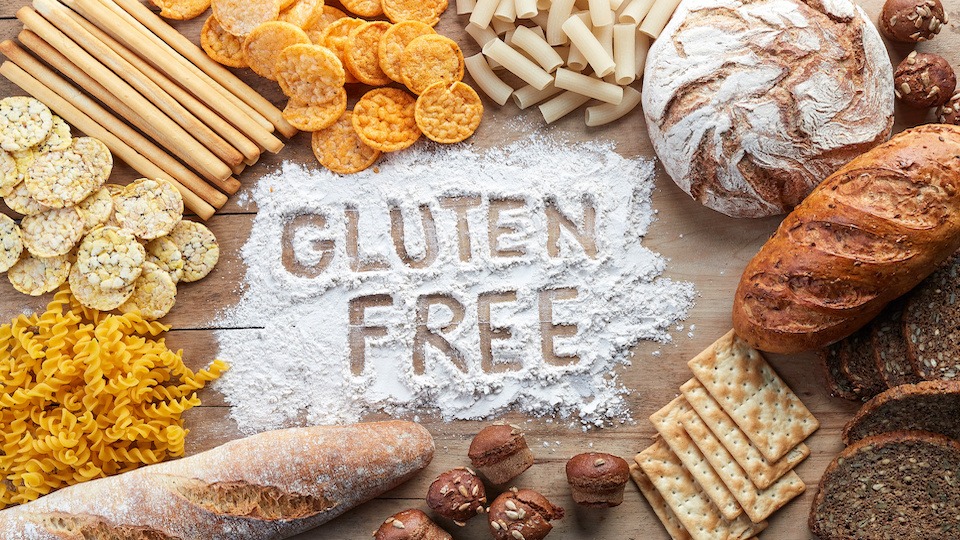When the “bean counters” get excited…that’s when you know that there is really something to it. Although it has nothing to do with beans, the bean counters are head over heels excited about gluten-free foods. The global market for gluten-free foods was over $17 billion and is projected to grow at 9% per year for the next 5-7 years. Avoiding gluten is clearly more than just a fad. This article by my team at UpWellness is must-read for anyone who is considering going gluten-free.
Enjoy,
-JL
Going gluten-free may seem trendy and cool, but for some people, this collection of proteins found in wheat can cause tremendous discomfort. If you have celiac disease or non-celiac gluten sensitivity, you know what we mean.
Gluten sensitivity conditions can cause a number of uncomfortable symptoms such as digestive upset headaches, weight loss, fatigue, and even dermatitis. The good news is, removing foods that contain gluten generally results in an improvement in symptoms.
Sometimes it can be hard to know exactly how to keep gluten out of your diet. Here are some tips that will help.
It all starts in the pantry
To avoid accidentally coming in contact with gluten, it is important to clean out your pantry thoroughly. Read labels carefully and remove items that contain barley, wheat, and rye. You will also need to be on the lookout for products that contain brewer’s yeast, seitan, and malt. These are lesser known but still contain gluten.
If you live in a household where some members are not gluten-free, consider designating certain parts of your pantry as gluten-free. This will help avoid possible cross contamination.
Take other precautions if you are highly sensitive like carefully washing utensils, pots, pans and cutting boards and even using a separate toaster.
Know about your options
Even though you will need to stay clear of grains containing gluten such as wheat, barley, and rye, there are many delicious and nutritious options including:
- Brown rice
- Millet
- Amaranth
- Quinoa
- Buckwheat
- Oats*
*Some oats may contain traces of gluten from the processing plant. If you are highly sensitive, be sure that you purchase certified gluten-free oats.
Know the many names of wheat
There are numerous varieties of wheat making it sometimes confusing for persons wishing to eliminate gluten from their diet. Here are some to watch for:
- einkorn
- khorasan (Kamut)
- durum
- Triticale
- spelt or farro
Check the allergens statement on food labels that identify if the product contains wheat or gluten. The FDA requires that food labels note if the foods contain any of the top eight allergens including wheat.
Purchase foods with a gluten-free certification label
Fortunately, there are standards put in place by the FDA that require that foods with a gluten-free label must contain less than 20 parts per million of gluten. Other organizations, including the Gluten Intolerance Group, are behind the Certified Gluten-free label requiring that products contain 10 parts per million or less gluten. Ongoing annual inspections and testing are used to keep compliance.
Increase the amount of produce that you eat
There is no gluten in produce and because gluten-free diets may lack necessary micronutrients like folate and magnesium, the more fresh produce you consume, the better.
Try these delicious and nutritious ways to add more fresh fruits and veggies to your diet:
- Embrace lettuce wraps
- Use veggie instead of wheat noodles
- Eat a piece of fruit for a snack
- Eat berries for dessert
- Eat salad as often as you can
- Snack on homemade sweet potato chips
Be careful of canned and frozen fruits and veggies that may contain gluten as a processing agent.
Watch out for gluten in beverages
Although certain beverages like water, coffee and tea are gluten-free – others, mostly those containing alcohol are sometimes not. This is because of the fermentation of grains that contain gluten such as wheat or barley. There are a number of popular gluten-free beers that are available and made from rice and sorghum. Be sure to opt also for distilled liquors including vodka or gin. Wine is generally gluten-free, but wine coolers may contain malt-barely – which contains gluten. Be careful of pre-made smoothies, coffee drinks or milkshakes that could contain gluten – be sure to read the labels carefully.
Condiments can be sneaky sources of gluten
Gluten often hides in condiments such as sauces as a stabilizer, emulsifier or thickener. Here is a list of condiments that you may need to stay clear of on a gluten-free diet:
- Dressings
- Malt vinegar
- Soy sauce
- Barbeque sauce
- Marinades
- Pasta sauce
- Worcestershire sauce
- Teriyaki sauce
Read the allergens label carefully to avoid gluten in condiments. Keep in mind that even if a condiment is wheat-free, it may contain gluten from barley or rye. This is the case with malt vinegar which is not gluten-free because malt comes from barley.
Although being gluten-free requires a fair amount of diligence, there are lots of great delicious options, and you may even find yourself cooking more fresh and homemade food to avoid gluten – this isn’t a bad thing!
-The UpWellness Team









